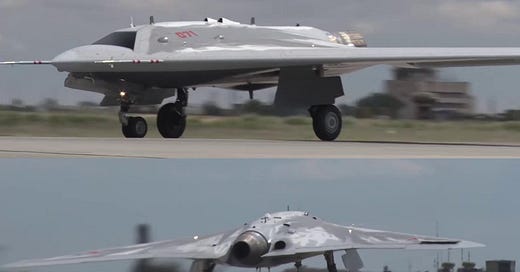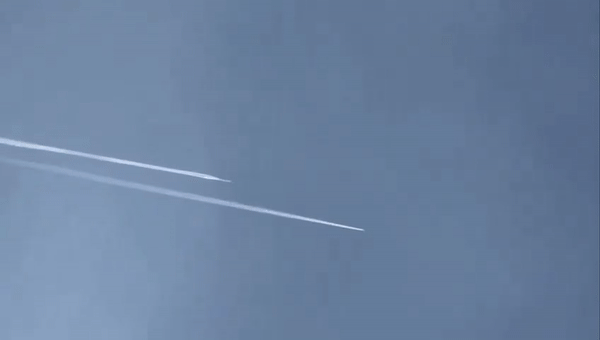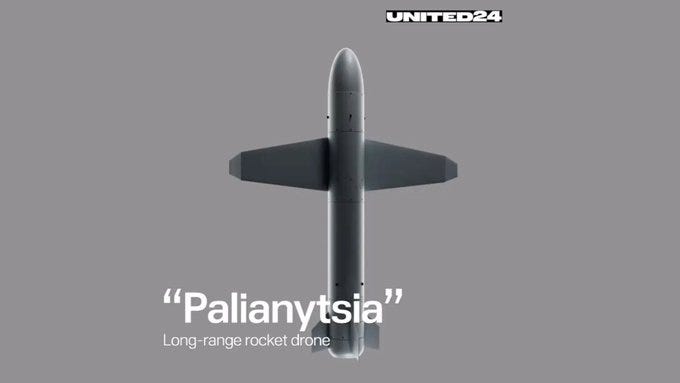What Was Russia's Stealth Drone Doing Over Eastern Ukraine?
Someone shot down the Okhotnik over Chasiv Yar.
A rare Russian air force Sukhoi S-70 Okhotnik stealth drone fell out of the sky over the Ukrainian-held fortress town of Chasiv Yar in eastern Ukraine on Saturday.
It’s unclear what brought down the 65-foot-wingspan, jet-propelled drone. Video shot from the ground depicts a trailing warplane firing a missile at the Okhotnik, sending the drone tumbling to the ground.
Was the shooter a Ukrainian fighter or a Russian fighter? If the Okhotnik malfunctioned, the Russians may have opted to shoot it down themselves rather than risk it crash-landing mostly intact inside Ukrainian lines.
Equally unclear is what the Okhotnik was doing over Chasiv Yar. It’s possible it was performing a surveillance mission, perhaps as part of combat trials feeding data into the drone’s ongoing development.
But the Okhotnik was designed to carry weapons. So it’s also possible it was flying a strike mission over the eastern front line in Ukraine. Less likely, it was flying an air-defense sortie.
A prototype Okhotnik flew for the first time in August 2019. A subsonic flying-wing, the Okhotnik could function as a semi-autonomous wingman for the Russian air force’s slowly-growing fleet of Sukhoi Su-57 manned stealth fighters.
With its 65-foot wingspan, the Okhotnik is in the same size and performance classes as China's Tian Ying drone, the U.S. Air Force's Lockheed Martin RQ-170 surveillance drone, the U.S. Navy's experimental Northrop Grumman X-47B and Boeing’s X-45C demonstrator. The RQ-170 is operational. The X-47 retired a few years ago. The Tian Ying and X-45 are company test assets.
Okhotnik’s shape could give it stealth qualities from some angles, but its unshielded engine nozzle probably means it can easily be detected from behind. Even so, it could contribute sensors, missiles and bombs to a combat mission, backing up human pilots in Su-57s.
The Kremlin took a small step toward proving the drone’s air-defense capability in late 2020, when an Okhotnik armed with captive air-to-air missiles flew a series of test flights.
The trial came three months after the U.S. military began testing its own dogfighting drone. The big difference between the two experiments is that the Russian test was mostly virtual. The American test on the other hand involved a real drone firing a real missile to shoot down a real target.
Developing the Okhotnik into an effective combatant requires more than a few captive-carry test flights. “The real crux will be training the Russian pilots to operate the Okhotnik in a [manned-unmanned] configuration where the human pilot will supposedly make the final decision to fire the drone’s missiles,” said Samuel Bendett, a researcher with CNA in Virginia.
On that front, the Americans are way ahead of the Russians. In a large-scale command-and-control exercise in 2020, crews at training ranges in the western United States launched Lockheed Martin QF-16 and Composite Engineering BQM-167 target drones.
Controllers then meshed a U.S. Air Force General Atomics MQ-9 drone flying from Creech Air Force Base in Nevada with other forces, helping to steer the MQ-9 toward one BQM-167 target. The MQ-9 fired a Raytheon AIM-9X infrared-guided air-to-air missile and shot down the BQM-167.
The MQ-9 is propeller-driven and lacks the performance of an Okhotnik. While it can fire missiles at slow-flying aerial targets, the MQ-9 is a poor candidate for high-intensity air-to-air combat.
For that mission, the U.S. Air Force is developing jet-propelled wingman drones under its Collaborative Combat Aircraft initiative. The service has tapped General Atomics and startup Anduril to build the first few hundred CCA drones.
Like the CCA drones, the Okhotnik can also attack targets on the ground. The Russian drone struck a moving ground target for the first time in a January 2021 test. According to Russian news agency RIA Novosti, the drone dropped its unguided munition “with an accuracy approaching that of a high-precision guided weapon.”
Read more:
Ukraine Has A New Cruise Missile. Now It Needs to Scale Up Production.
On Sept. 6, Lithuania pledged 10 million euros—$11 million—to Ukrainian efforts to produce long-range munitions that can strike targets inside Russia, potentially including airfields, headquarters, industrial sites and oil refineries.







